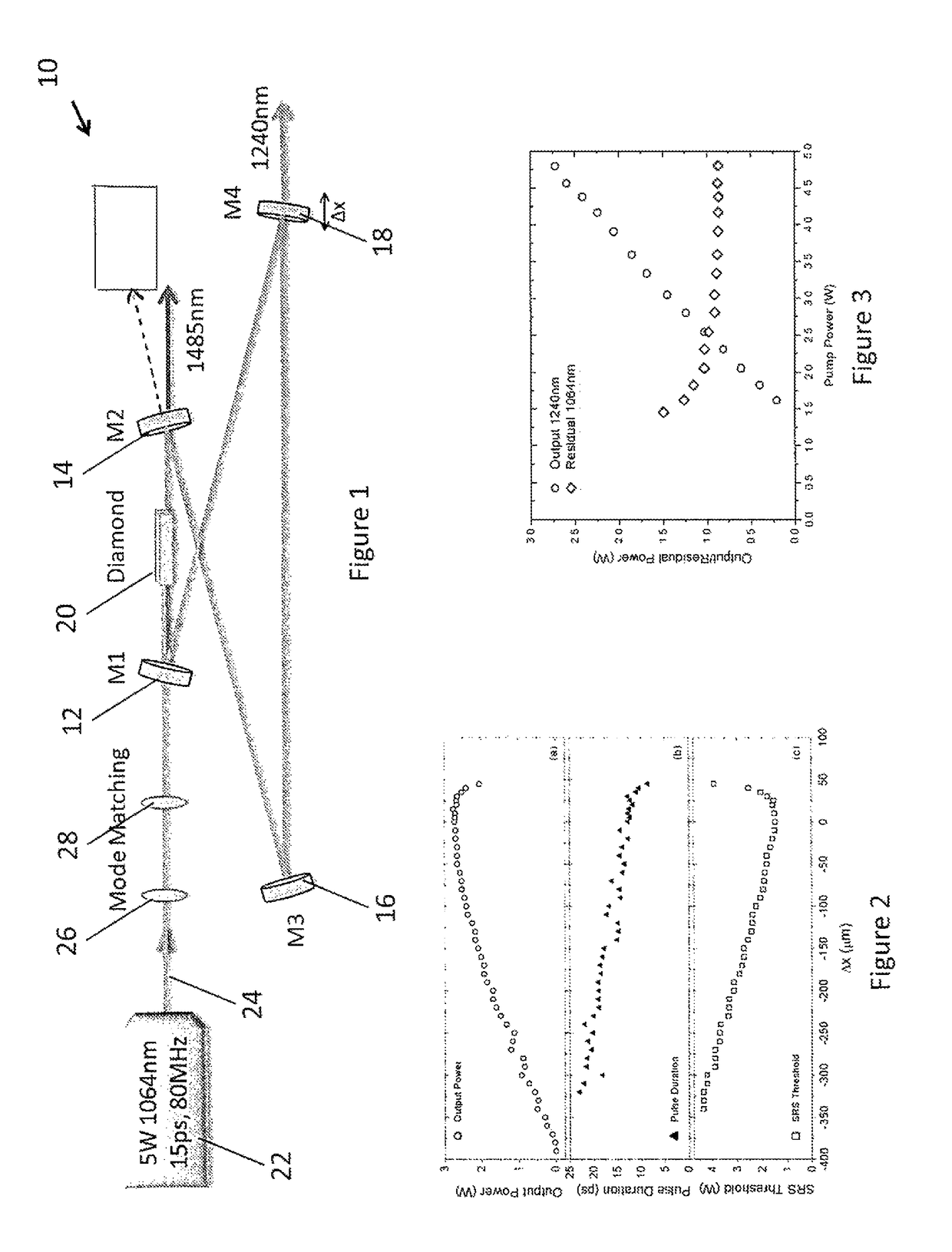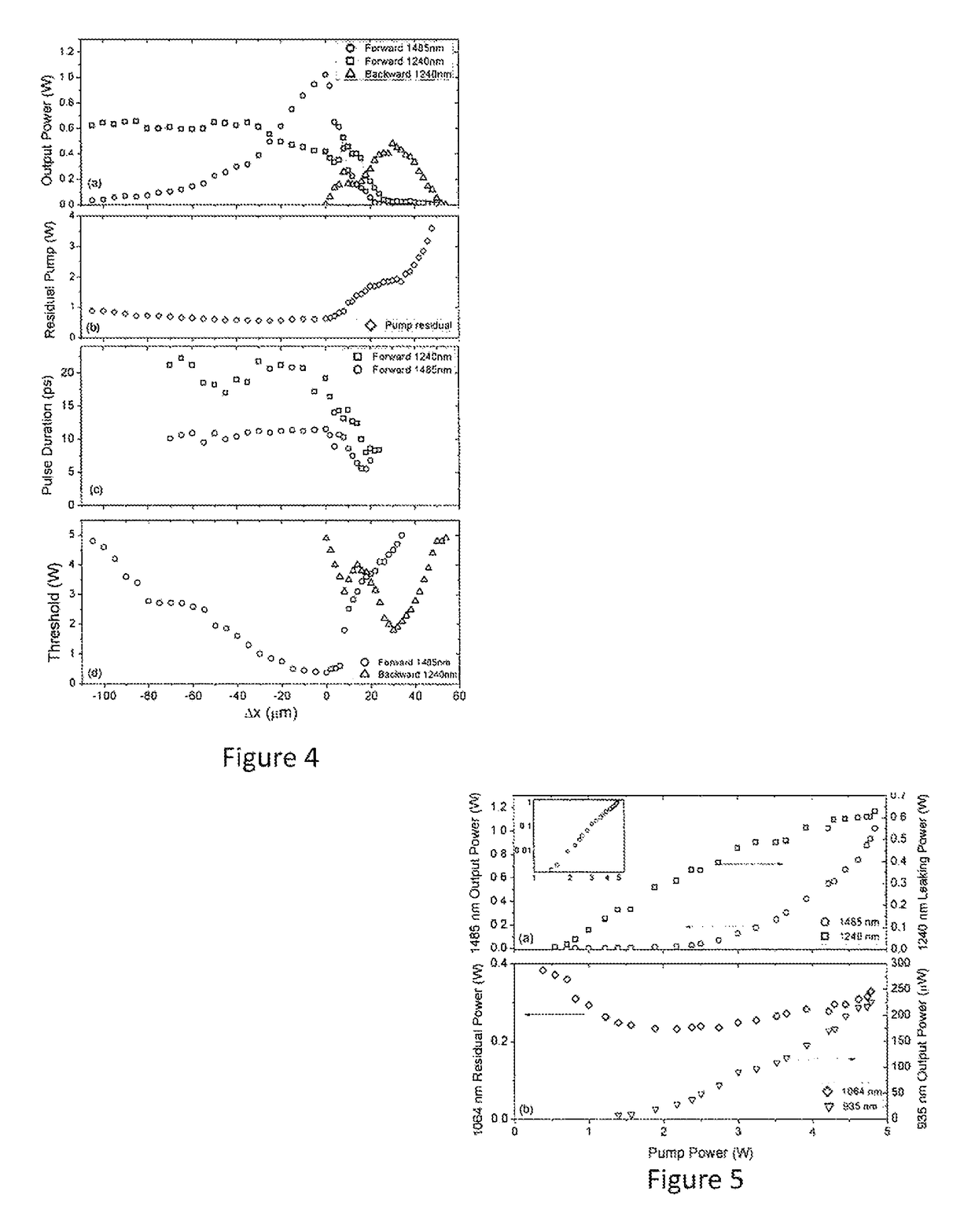Method and a system for generating a Raman second Stokes light to a source light
a technology of source light and raman, which is applied in the direction of basic electric elements, laser details, electrical apparatus, etc., can solve the problems of not being able to generate light using existing systems, less than desirable or practical performance of systems exploiting srs, etc., and achieve the effect of lowering the threshold for generation
- Summary
- Abstract
- Description
- Claims
- Application Information
AI Technical Summary
Benefits of technology
Problems solved by technology
Method used
Image
Examples
Embodiment Construction
[0034]FIG. 1 shows a schematic diagram of an embodiment of a system for generating a Raman second Stokes light to a source light 24, the system being generally indicated by the numeral 10. The system 10 has an optical resonator that is in this embodiment an optical ring resonator in the form of a bow tie shaped optical ring resonator comprising in this embodiment two curved mirrors 12, 14 (labelled M1 and M2, and having a radius of curvature ROC=200 mm) and two flat mirrors 16, 18 (M3 and M4). The specification for each of the dielectric coated mirrors is summarized in Table 1. Light is extracted from the resonator by at least one mirror (“output coupler”), which is at least partially transmissive. Light may be extracted using generally any suitable light extractor. Disposed in the resonator is a nonlinear optical medium 20 that can support both Raman and four wave mixing interactions.
[0035]
TABLE 1Summary of mirror coatings.Mirror1064 nm1240 nm1480 nmM1, M3T = 93%R > 99.99%T = 90%M2...
PUM
 Login to View More
Login to View More Abstract
Description
Claims
Application Information
 Login to View More
Login to View More - R&D
- Intellectual Property
- Life Sciences
- Materials
- Tech Scout
- Unparalleled Data Quality
- Higher Quality Content
- 60% Fewer Hallucinations
Browse by: Latest US Patents, China's latest patents, Technical Efficacy Thesaurus, Application Domain, Technology Topic, Popular Technical Reports.
© 2025 PatSnap. All rights reserved.Legal|Privacy policy|Modern Slavery Act Transparency Statement|Sitemap|About US| Contact US: help@patsnap.com



